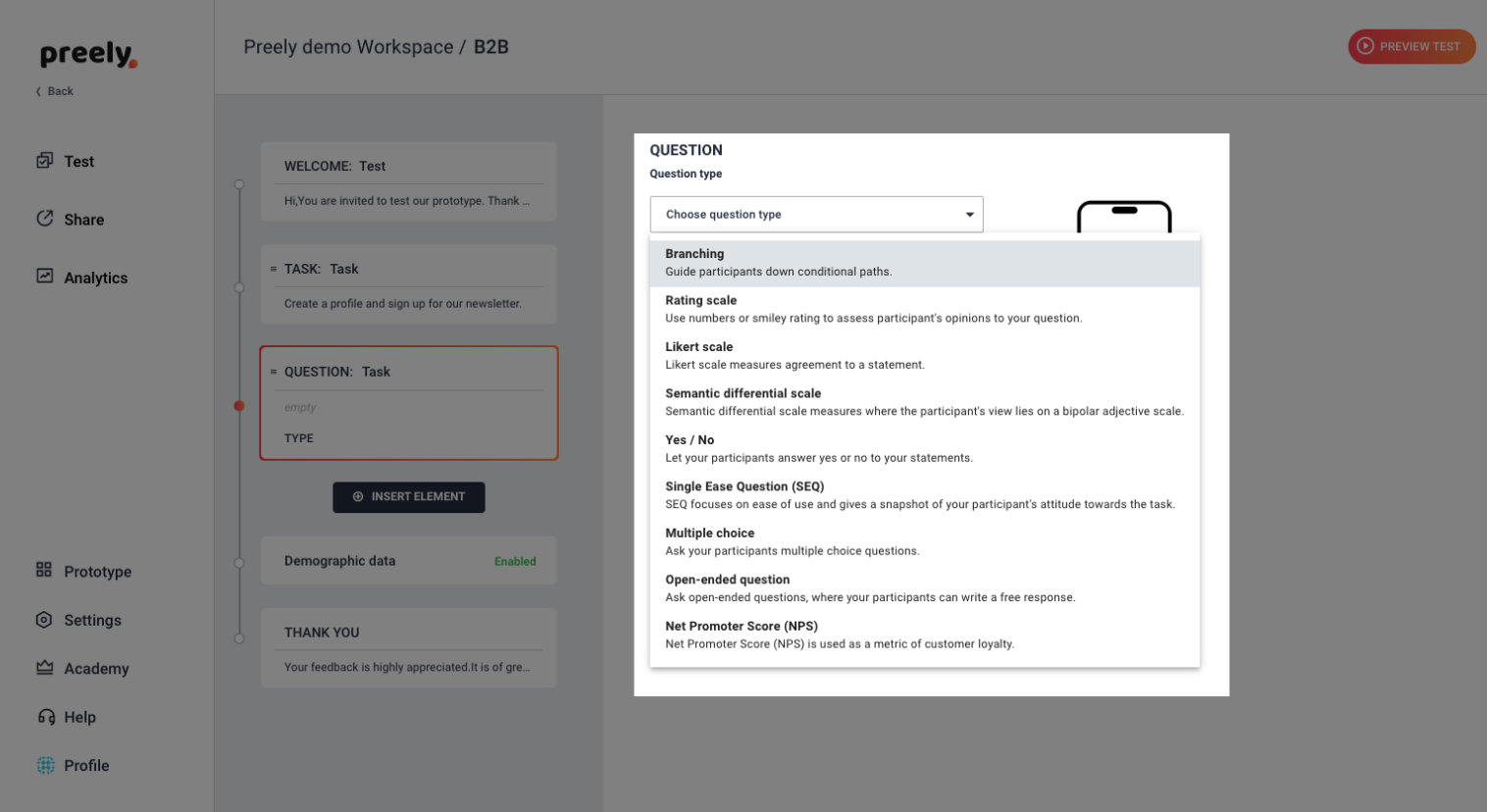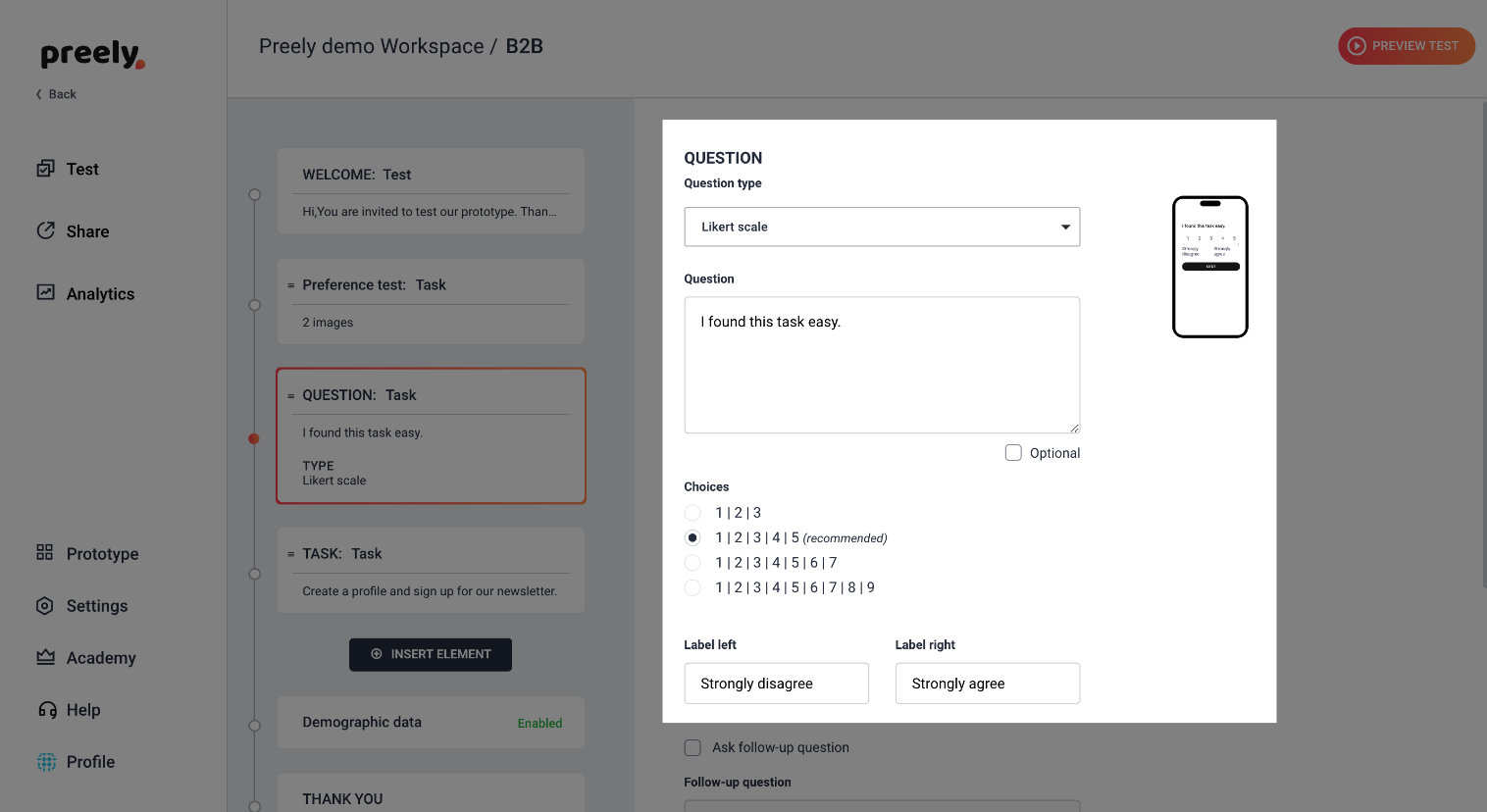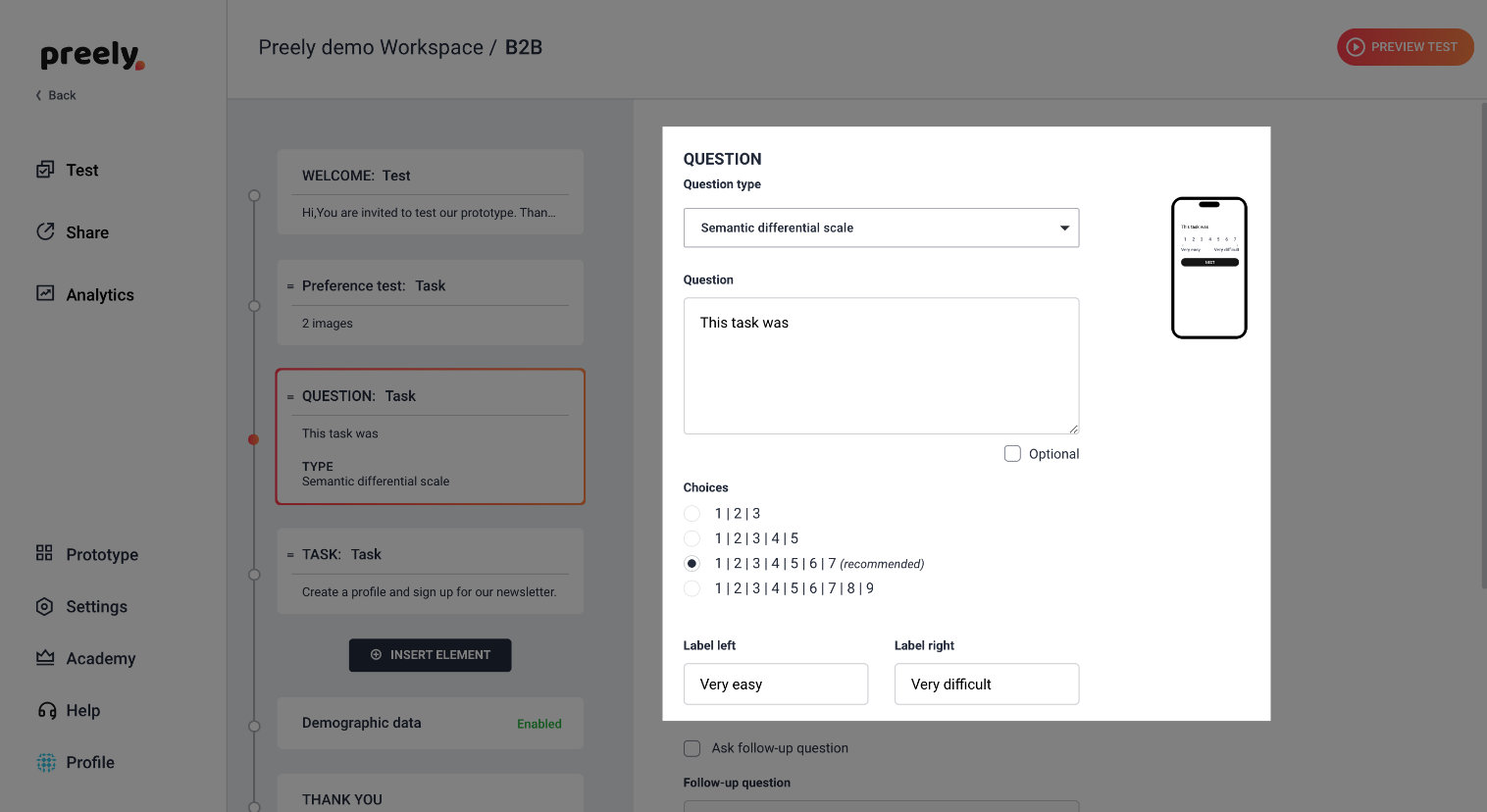Opinion scales: Likert & Semantic Differential
In Preely you have the option of including Likert Scales and Semantic Differential Scales. These types of scales are great for direct access to what participants’ attitude is to different statements.
Likert scale
Likert scale measures agreement to a statement. Normally, you’ll have an odd number of options, usually five (in Preely you can choose between three, five, seven and 10).
Step-by-step guide
Semantic differential scale
Semantic differential scale measures where the participant’s view lies on a bipolar adjective scale. Normally, you’ll have an odd number of options, often seven (in Preely you can choose three, five, seven or 10).
Step-by-step guide
Analytics
Under ‘Analytics’ in Preely you can easily get an overview over the chosen answers. On the ‘Summary page’ you can see average rating, together with the highest and lowest rating. If you click ‘Answers’ you see the distribution og answers across the scale and you can see who gave whaich rating.
Odd vs. even scales
Normally the scales are odd due to the opportunity of having a neutral point. Using an even scale minimizes the social-desirability bias. For now we have decided to only have odd scales. How many points on the scale you use can vary, but normally anything above nine rarely brings any extra value (except NPS). In Preely you can choose between three, five, seven and 10 (normally used for NPS)
Consider the following when using these rating scales
- Using standardized usability questions and questionnaires, instead of creating your own. Maybe you can even find industry benchmarks
- Use existing scale labels when designing the scales e.g. use ‘strongly agree – strongly disagree’, instead of reinventing the wheel
- Ensure your polar adjectives are actually opposites when using semantic differential scales, again look at existing labels
- If the question is not applicable to all participants, make the question optional. Then you do not need to consider if a neutral answer is due to that the participants didn’t believe the questions were relevant to them
- Include a follow-up question to get more insights from the participants e.g. ‘Why did you choose this rating?’ You can add this directly in Preely when you make the scale


